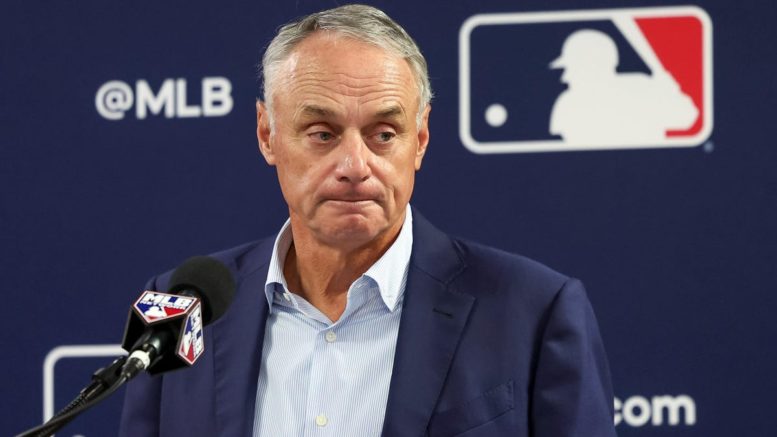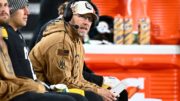It’s easy to say that MLB gets too caught up in its past and tries too hard to be the game it once was. A major part of baseball’s charm is its connection to its past. While the other sports don’t look anything like they did even 20 or 30 years ago, baseball doesn’t ever move too far from what it’s always been. The very nature of it makes it so that it can’t ever be too far removed from its past, even if the players are miles better athletes than they were just two decades ago.
Which keeps it close enough to its past versions that a lot of fans will always yearn for it to just take a couple steps to look like what we remember. You can’t watch Connor McDavid scorch by entire teams on a rush and ever think that hockey could go back to what it was. But baseball’s evolution is always a little more on the margins or by degrees instead of leaps.
Still, there’s a healthier debate to be had, one that MLB only paws at, whether going back to the game you and I may remember will serve it better with the fans who eventually will replace us. Aiming your game and marketing strategies at people who define their lives around the date Superunknown was released has a shelf life, after all. And it also ignores how the game is administered and strategized today. Which is the mistake MLB and Rob Manfred are probably making with the possibility of lowering the cap on pitchers on MLB rosters next year from 13 to 12.
The idea at the heart of it is to make starting pitchers the epicenter of the game again. Relievers get pretty faceless and nameless to a lot of fans, especially the way teams churn through them over a season. But those fans will make time for a Ohtani-Strider matchup if one, there were more pitchers with anywhere close to that name recognition and two, fans had more than a sliver of hope that either pitcher would still be around come the end of the sixth inning. As someone who gleefully remembers purposely tanking a physics test so I could sprint out of the classroom in time to catch Kerry Wood vs. Tom Glavine in May of 1998, I understand the impetus.
But simply reducing the number of pitchers in a bullpen by one isn’t going to magically turn starters from four- or five-inning sprinters to six or seven-inning distance runners. Teams aren’t set up that way, and more to the point, pitchers aren’t developed that way anymore.
Take a look at the minors last year. No one in Triple-A threw more than 140 innings except for four guys, and none of those four had an ERA under 4.00. These four – Mitch Spence, Evan McKendry, Robert Duggar and Blake Walston – might max out as MLB journeymen pitchers one day. They’re certainly not a priority for their MLB teams. Walston is the only one under 25 and is a former first-round pick, so maybe there’s more for him out there, but it’s not a safe bet.
Drop down to Double-A, and only one pitcher threw more than 140 innings at that level. That number of innings at Double-A would be a fine total if we were seeing pitchers then bumped up to 160-180 at Triple-A as they climb the ladder, but that’s just not the case. Go back a year and only six Triple-A pitchers in 2022 broke 140 innings. Only three did in Double-A, and none of them would do so at that level or the one above in 2023.
Go back to 2005, and 26 pitchers threw more than 140 innings at Triple-A, including names like Adam Wainwright and Matt Cain.
Pitchers are going to get extended at the MLB level, if at all, though this cotton-wool treatment of pitchers from draft day to debut hasn’t prevented injuries anymore than the throw-them-into-oblivion approach of 30 years ago. Teams are just more prepared with more pitchers to pick up the slack these days. Forty-four pitchers threw enough innings to qualify for the ERA title last year (162). Twenty years ago, that number was 92. Pitchers on MLB rosters right now can’t suddenly take up the slack of one less reliever being available to back them up at the snap of a finger simply because we want them to. It would have to be a process every MLB team takes up from the lowest levels in their systems. And they’re not going to, because teams want pitchers that have MLB stuff to get to MLB as quickly as possible and they’ll figure out the rest later. And they’re not going to risk injuries in the minors that don’t get them wins at the MLB level.
In addition, the scaling back of starters’ workloads wasn’t just injury protection, but organic strategy. More and more teams finally opened up to the numbers that said most starters struggle to get through a lineup a third time, only a handful really had the skill to, so just stopped asking them to. Some of that could be attributed to teams’ insistence on velocity over everything that saw more and more pitchers come up with limited repertoires, but that’s where we are. It’s unlikely to change all that much, even if Strider is going to start featuring a curveball this season that will make him even more of a Valkyrie than he already was.
This has echoes of MLB’s ban on fielding shifts, which were simply a reaction to how the game had developed. Pitchers became harder to hit, hitters tried to maximize the shrinking amount of contact they made by pulling the ball and getting it into the air, defenses adjusted to where batted balls were going. Reducing pitchers on a roster doesn’t really get to the root of the perceived problem, much like banning shifts didn’t.
That doesn’t mean that a lowering to 12 pitchers couldn’t have a positive effect, it just might not be the one Manfred and the committee is thinking of. What we’d more likely see is more multi-inning relievers, which is fine. Pitchers who can take on two innings out of the pen have a chance to become more household names than whatever yahoo comes out now to throw 55 pitches per week at 99 MPH before his elbow turns to sawdust and puke, and they just move on to the next yahoo. No, they won’t become the stars that starting pitchers are, but it could be a role with some juice to it if MLB would only portray it that way. Certainly, we’ve seen the acclaim and attention that Andrew Miller or Josh Hader (back when he used to do that sort of thing) would get in the postseason by coming into the middle of games and sticking around for a bit.
We’ve already seen a deemphasizing of the closer role, and most fans know now that the most important outs can come in the sixth, seventh, or eighth innings instead. A refocusing on the guys who get those outs might be something MLB’s marketing arm wants to think about, too.
Baseball is forever linked to its past, but that doesn’t mean it can return to it. Manfred and his cronies would be better off thinking about what baseball could be instead of what it was.
Original source here
#upset #Rob #Manfred #starting #pitchers





